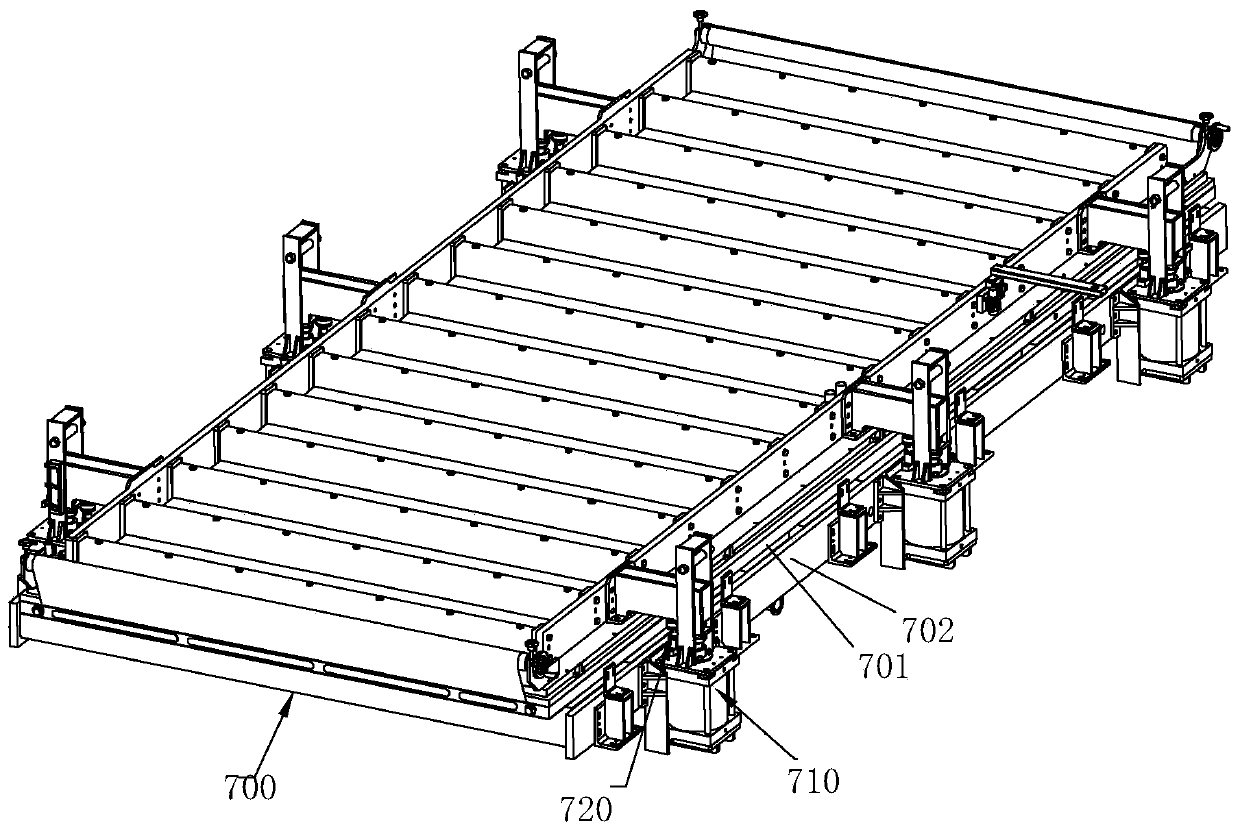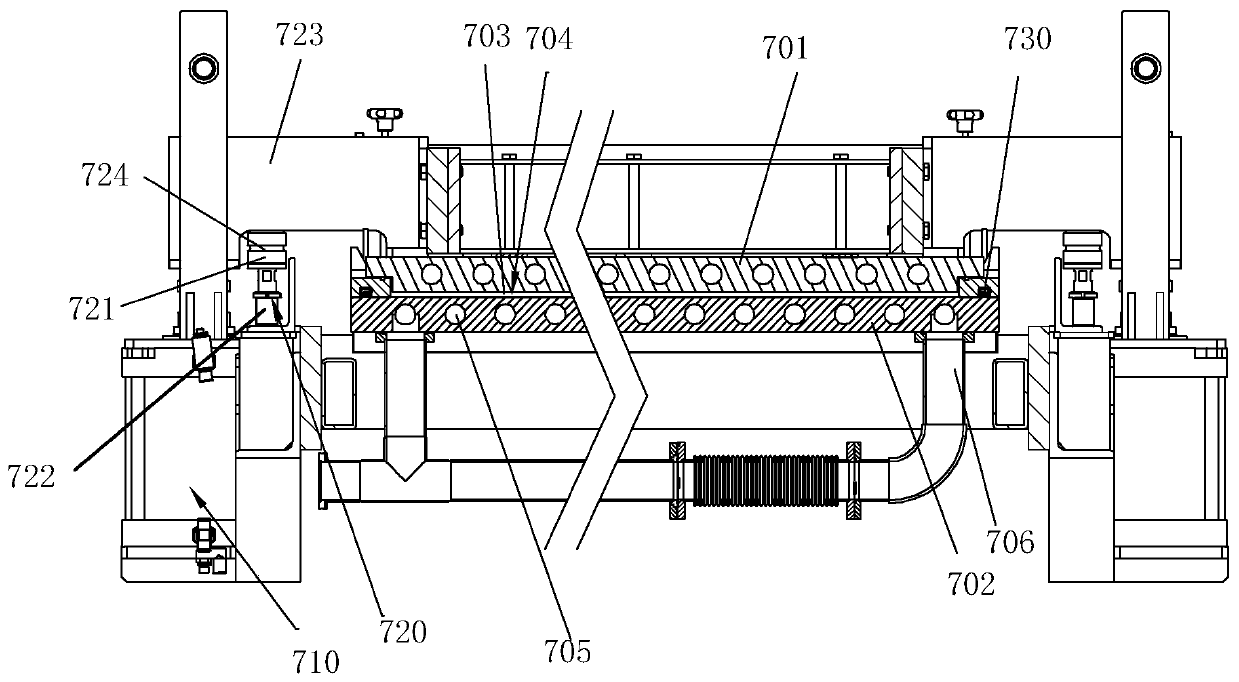Photovoltaic module cold pressing process
A photovoltaic module and cold pressing technology, which is applied in photovoltaic power generation, electrical components, semiconductor devices, etc., can solve problems such as unbalanced cooling speed of the upper and lower cover plates, inconsistent material properties, and inability to produce components, etc., to avoid Effects of warping and cracking, better edge quality, and increased efficiency
- Summary
- Abstract
- Description
- Claims
- Application Information
AI Technical Summary
Problems solved by technology
Method used
Image
Examples
Embodiment 1
[0035] The photovoltaic module is a 100-watt module on the roof, modified PTU or poe is used as a binder, the upper cover is a 3.2mm thick glass plate, and the lower plate is a 2mm thick FRB (also called a fiber backboard).
[0036] The first step is vacuum lamination. The temperature of the heating table 1 of the laminator is 130-150°C. The upper box 1 and the lower box 1 are closed to vacuumize the upper chamber, the lower chamber and the lower chamber at the same time. The vacuum degree is 80-120Pa. The vacuuming time is 350-500 seconds, the flexible pressure member covers the surface of the photovoltaic module, pressurizes the photovoltaic module, then fills the upper cavity with gas to heat and pressurize at the same time, the pressure is 0-0.05MPa, and the lower cavity keeps pumping Vacuum, heat and press for 5-7 minutes, and then enter the heat press for curing, heat and press.
[0037] The second step, hot pressing curing glue joint
[0038] The temperature of the hea...
Embodiment 2
[0042] The photovoltaic module is a glass curtain wall module under the house, using PVB as a binder, the upper plate is made of 2.5mm thick glass, and the lower plate is made of 8mm thick glass.
[0043] In the first step, the temperature of the heating table of the laminator is 150±10°C, the vacuum degree is 80-120Pa, the vacuuming time is 3-5 minutes, and the upper chamber is filled with gas at a pressure of 0-0.05MPa. The pressing time is 5-7 minutes.
[0044] In the second step, the temperature of the heating workbench 2 is 160-170°C, and the compressed air is filled into the upper chamber 2, the pressure is 0.02-0.1Mpa, and the time for inflating, pressurizing and heating is 8-10 minutes.
[0045] In the third step, the vacuum degree is 0-0.08Mpa, the temperature of the upper cooling plate and the lower cooling plate is 13°C, and the vacuum cooling and pressing time is 7-10 minutes.
[0046] All the other are the same as embodiment 1
[0047] The following comparative ...
PUM
 Login to View More
Login to View More Abstract
Description
Claims
Application Information
 Login to View More
Login to View More - R&D
- Intellectual Property
- Life Sciences
- Materials
- Tech Scout
- Unparalleled Data Quality
- Higher Quality Content
- 60% Fewer Hallucinations
Browse by: Latest US Patents, China's latest patents, Technical Efficacy Thesaurus, Application Domain, Technology Topic, Popular Technical Reports.
© 2025 PatSnap. All rights reserved.Legal|Privacy policy|Modern Slavery Act Transparency Statement|Sitemap|About US| Contact US: help@patsnap.com



